5 common nutrition myths: debunked by our dietitian
It seems as though nutrition advice is always changing. One minute we see an article bragging about the latest diet or superfood, and the next minute there’s a TV program or Instagram post telling us to do the opposite. It’s frustrating to try and figure out what dietary changes we need to make for health and wellness when we’re constantly hearing conflicting information.
The easiest way to maintain a healthy weight and prevent diet-related health complications is to follow a healthy, balanced diet which includes all core food groups in moderation. Although there’s always a new diet or “rule” which is a tempting quick fix to fastrack results, these suggestions are often poorly supported by research and are simply misconceptions. Plus, a lot of these diet rules or restrictions take the joy away from eating and might even be counterproductive for our health. Read on to find out why these five nutrition myths are probably best forgotten.
1. You need to avoid all carbs and sugars – even fruit – to lose weight
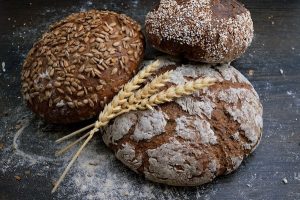
Rejoice, pasta lovers – cutting carbs completely is definitely not necessary to achieve weight loss. Carbohydrates are our body’s preferred and most efficiently digested fuel source, meaning that cutting all carbs out will likely lead you to feel fatigued, have impaired concentration and negatively impact your performance and recovery from physical activity. Carbohydrate foods are also an important source of B vitamins, folate, and fibre. In fact, cutting out breads, fruits or other complex carbs can not only influence the amount of fibre you get, but also impacts your ability to get a balance of all types of fibre (including insoluble fibre, soluble fibre and resistant starch). This is a big downfall when it comes to gut health and microbiome diversity. Instead of cutting out carbs, be mindful of portion size to ensure you don’t overindulge, as rice, pasta and breads can be easily overdone. Also look for a balance of complex carbohydrates from wholegrain breads/cereals, fruit, starchy veg and legumes.
2. You can meet your calcium requirements by eating lots of green vegetables
We all know that calcium plays an important role in bone health, but did you know that calcium is equally as important for blood clotting, heart health, and coordinating muscle contractions? In other words, calcium is quite a big deal, so it’s worth clearing up the misconception that green leafy vegetables, nuts and chickpeas are calcium-rich foods. Although they contain dietary calcium, the amount of calcium per serve of these foods is quite small when compared to dairy products. For reference, to achieve the equivalent of calcium in a glass of milk (about 300 mg), you’d need to eat 100 almonds, about 4 cups of green leafy veggies, or 3 cups of chickpeas. And this is only one “serving” of calcium/dairy – most of us need between 2.5-4 times this amount! Essentially, we shouldn’t neglect dairy foods as they are such an important source of calcium. If you have high cholesterol or are watching your waistline, choose low fat varieties. If you follow a plant-based diet or are intolerant to dairy, look for a calcium-fortified milk alternative such as lactose free, soy or almond. Check the label to make sure that at least 120mg of calcium/100mL has been added.
3. Coconut oil is a healthier, more natural alternative than olive oil
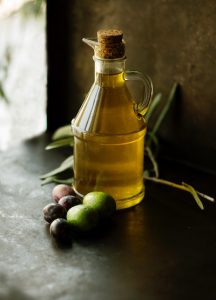
All oils have gone through some degree of processing to turn from their whole food derivative into an edible oil product. And coconut oil is not all it’s claimed to be: it’s actually about 92% saturated fat, which is the type of bad fat that increases our LDL cholesterol and contributes to blockages in our arteries when consumed in excess. In comparison, unsaturated oils such as olive oil, avocado oil and canola are healthier options that help to raise the good cholesterol in our blood, and lower the bad cholesterol. It was initially thought that coconut oil was safer to cook with because it has a higher smoke point and is less likely to break down and become carcinogenic. But since then studies have proven that unsaturated oils, especially olive oil, are very resistant to oxidation even at a high temperature. Plus – olive oil packs a huge amount of antioxidants, has strong anti-inflammatory properties and may play a role in preventing breast, colon, lung, ovarian and skin cancer development.
4. Never skip breakfast if you want to lose weight
We grew up hearing that breakfast is the most important meal of the day, especially if you’re hoping to lose weight. A lot of us have heard the myth that we need to eat three regular meals and snacks to “stimulate our metabolism” if we are trying to watch our waistline; however, we now know that this isn’t necessarily true. The only principle required for weight loss is “calorie deficit”, which simply put describes that if we eat fewer calories than what we burn through our resting metabolism and physical activity, then we should theoretically lose weight. The most recent studies show that we could eat one huge meal or six small meals over the day, but provided our calorie intake is the same on both days: we’re no better or worse off for weight loss. Meaning that if you’re not a breakfast person, or have to force yourself to eat every few hours – don’t panic! The only reason I may recommend six small meals over fewer, more spaced apart meals is for appetite and portion regulation. If you think that skipping meals and snacks would influence your hunger levels and cause you to overeat later in the day to compensate, then it’s worth setting your alarm 10 minutes earlier for a hearty breaky and meal prepping some healthy snacks.
5. You need to consume vitamin and mineral supplements to stay healthy
Although it can be tempting to take a vitamin or mineral tablet for piece of mind, I always preach that a “food first” approach to nutrition is more effective. Vitamin and mineral supplements are not needed for the average person that consumes a healthy, balanced diet containing all food groups. In fact, most vitamins can’t be stored for very long, meaning that taking a tablet won’t give you extra nutrition to save for a rainy day. Instead, the expensive supplements you’re taking become no more than – for lack of a better and less cringy word – waste. Secondly, taking vitamin and mineral supplements isn’t an effective “cheat” way to justify a diet deficient in fruit, veg and other important food groups. We actually know that the nutrients in food are better absorbed than the nutrients in supplement form, due to the complex interplay between the vitamins, minerals and phytochemicals in food. Lastly, certain vitamin and mineral tablets can be toxic in high doses, and can occasionally cause more harm than good. At the end of the day, the only populations that need to utilise nutrition supplements are women who are pregnant or breastfeeding, some vegetarians or vegans, the elderly, people with allergies or malabsorption problems, or those with diagnosed nutrient deficiencies. Otherwise, enjoy a balanced diet to save yourself splashing cash on expensive and unnecessary vitamin tablets.
This post was written by Regina Tilyard. Regina is an accredited practicing dietitian and longstanding member of the Stafford Physio team. You can read more about Regina here.

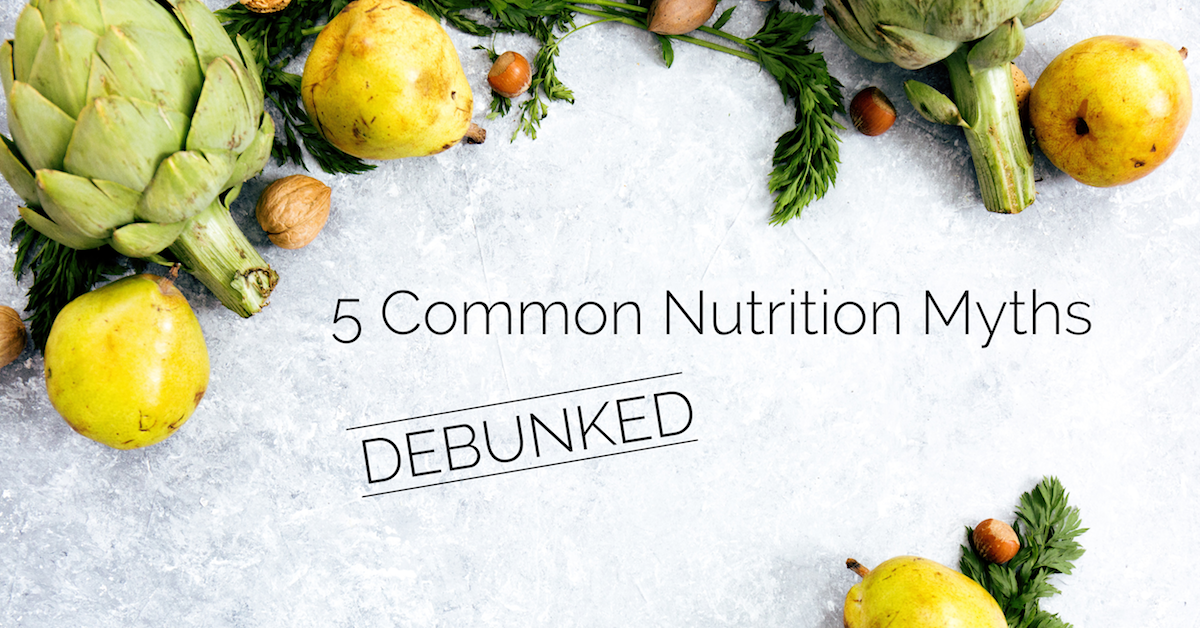

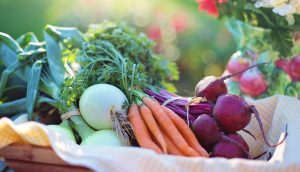
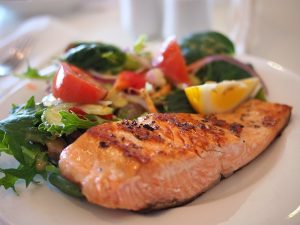 4. Consume oily fish 2-3 times per week
4. Consume oily fish 2-3 times per week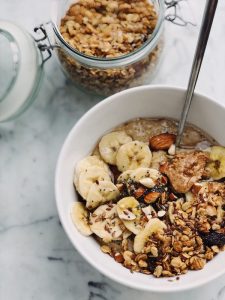
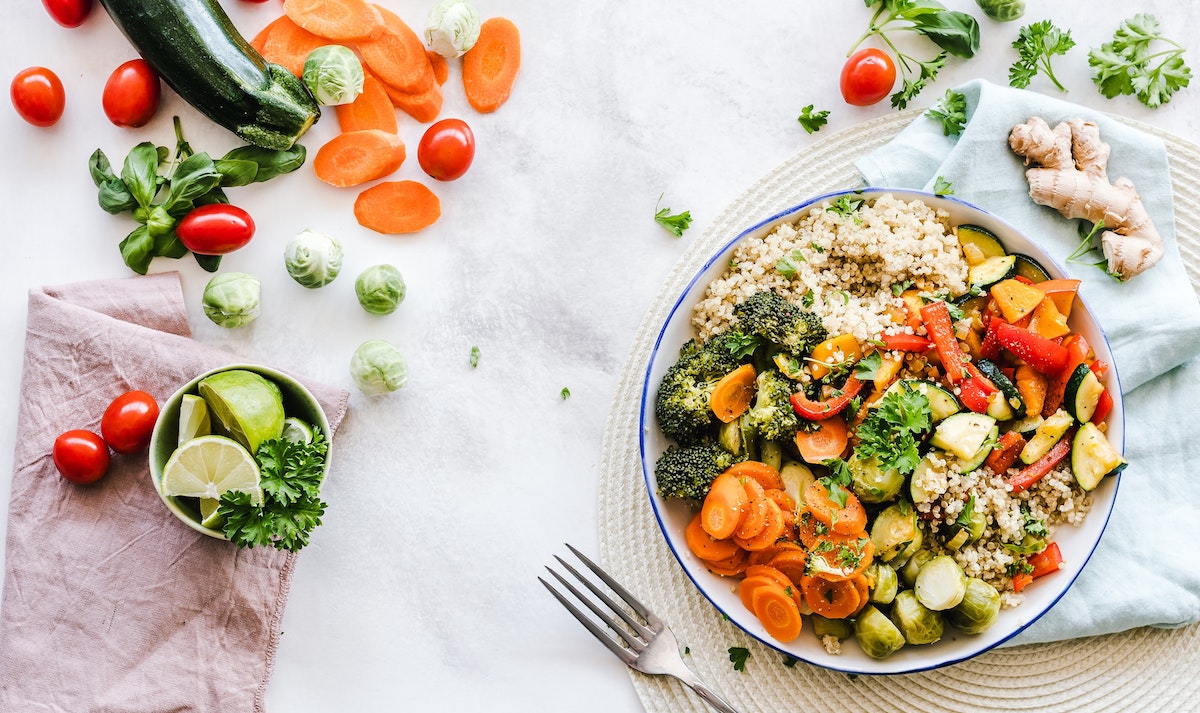
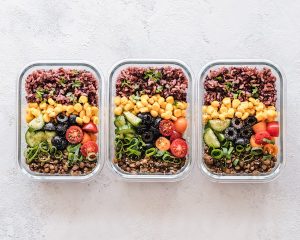 Try following this portion guide that illustrates the types and quantities of foods that we should be aiming to incorporate in every main meal (lunch and dinner):
Try following this portion guide that illustrates the types and quantities of foods that we should be aiming to incorporate in every main meal (lunch and dinner):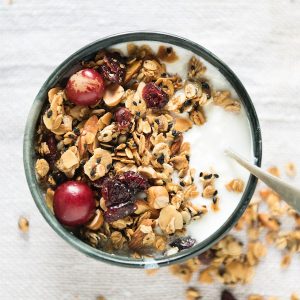 Breads and cereals:
Breads and cereals: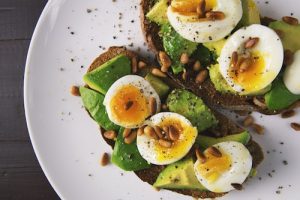 A boiled egg Great with: sliced avocado, a spread of hommus, cracker pepper or chilli flakes, sliced tomato and cheese on a multigrain cracker
A boiled egg Great with: sliced avocado, a spread of hommus, cracker pepper or chilli flakes, sliced tomato and cheese on a multigrain cracker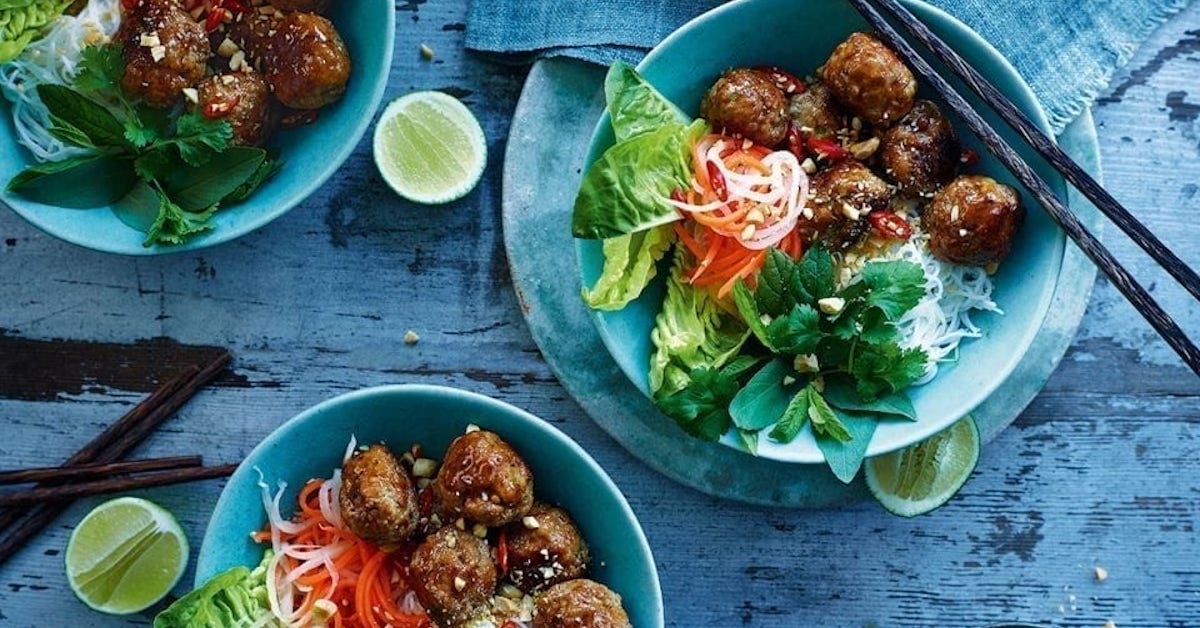
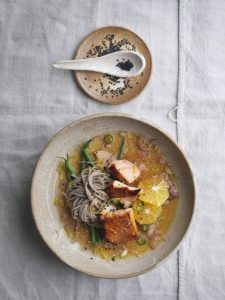 Regina says: Salmon, soba and citrus: a nutritious and flavoursome combination to add excitement to any weeknight dinner. Oily fish such as salmon are not only tasty and refreshing, but a powerhouse of important nutrients. Salmon is a fantastic source of omega-3, which is an essential fatty acid that the body can’t produce on its own. Omega 3 fatty acids have been shown to help regulate metabolism, reduce inflammation, lower blood pressure and cholesterol, and protect against heart disease. Salmon is also an excellent source of protein, making this dish a great post-workout choice – especially when paired with soba noodles. Soba noodles are made from buckwheat, which is a high quality protein based on amino acid composition and digestibility. Soba noodles are also packed with fibre to keep our digestive system healthy. Lastly, the addition of citrus fruit provides us with antioxidants for reducing cell damage, including the powerful antioxidant vitamin C that assists with the synthesis of collagen, connective tissues, bones and teeth. Overall, this nourishing combination provides one serve each of wholegrains and lean meat. To boost the vegetable content to two serves, dish up each portion with a side of 100g steamed green and/or orange vegetables per portion (fresh or frozen).
Regina says: Salmon, soba and citrus: a nutritious and flavoursome combination to add excitement to any weeknight dinner. Oily fish such as salmon are not only tasty and refreshing, but a powerhouse of important nutrients. Salmon is a fantastic source of omega-3, which is an essential fatty acid that the body can’t produce on its own. Omega 3 fatty acids have been shown to help regulate metabolism, reduce inflammation, lower blood pressure and cholesterol, and protect against heart disease. Salmon is also an excellent source of protein, making this dish a great post-workout choice – especially when paired with soba noodles. Soba noodles are made from buckwheat, which is a high quality protein based on amino acid composition and digestibility. Soba noodles are also packed with fibre to keep our digestive system healthy. Lastly, the addition of citrus fruit provides us with antioxidants for reducing cell damage, including the powerful antioxidant vitamin C that assists with the synthesis of collagen, connective tissues, bones and teeth. Overall, this nourishing combination provides one serve each of wholegrains and lean meat. To boost the vegetable content to two serves, dish up each portion with a side of 100g steamed green and/or orange vegetables per portion (fresh or frozen).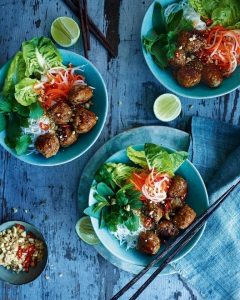 Regina says: When it comes to maintaining a healthy, balanced diet, it’s crucial to find ways to truly enjoy the foods we’re putting on our plate. This recipe is a taste explosion providing a great example of how we can combine fresh, whole foods to maximise flavour. Chilli, lemongrass and herbs are an excellent way to flavour food without contributing additional kilojoules or sodium. However, this recipe does contain a high amount of salt and high sodium sauces, making it an occasional treat to enjoy. But for those looking to reduce their sodium intake or those with high blood pressure, there’s a few easy replacements that can be made to enjoy similar Asian recipes. Try using salt reduced soy sauce, and diluting high sodium sauces with lime juice, pineapple juice or even water. Peanut oil, chilli oil and sesame oil are also delicious, low-salt alternatives that don’t sacrifice the desired taste. Once again, this recipe is protein packed due to the contribution of pork. Red meat is a complete protein source, meaning it contains all essential amino acids that help us build muscle amongst other functions. Red meat is also a fantastic contributor of many important nutrients including iron for carrying oxygen and making red blood cells, zinc for wound healing and cell growth, and B12 for DNA synthesis and energy production. Lastly, this recipe highlights a recent health trend of “pickled”veg. However, it’s important to keep in mind that pickling foods with vinegar such as this recipe does not have the same fermentation effects of pickling food in brine. Again, these pickled veg are a high sodium choice making this recipe a tasty treat to be enjoyed on occasion. For a low salt alternative, simply julienne or grate some fresh veg such as carrot, zucchini and cabbage. Follow these steps for this tasty, Vietnamese favourite:
Regina says: When it comes to maintaining a healthy, balanced diet, it’s crucial to find ways to truly enjoy the foods we’re putting on our plate. This recipe is a taste explosion providing a great example of how we can combine fresh, whole foods to maximise flavour. Chilli, lemongrass and herbs are an excellent way to flavour food without contributing additional kilojoules or sodium. However, this recipe does contain a high amount of salt and high sodium sauces, making it an occasional treat to enjoy. But for those looking to reduce their sodium intake or those with high blood pressure, there’s a few easy replacements that can be made to enjoy similar Asian recipes. Try using salt reduced soy sauce, and diluting high sodium sauces with lime juice, pineapple juice or even water. Peanut oil, chilli oil and sesame oil are also delicious, low-salt alternatives that don’t sacrifice the desired taste. Once again, this recipe is protein packed due to the contribution of pork. Red meat is a complete protein source, meaning it contains all essential amino acids that help us build muscle amongst other functions. Red meat is also a fantastic contributor of many important nutrients including iron for carrying oxygen and making red blood cells, zinc for wound healing and cell growth, and B12 for DNA synthesis and energy production. Lastly, this recipe highlights a recent health trend of “pickled”veg. However, it’s important to keep in mind that pickling foods with vinegar such as this recipe does not have the same fermentation effects of pickling food in brine. Again, these pickled veg are a high sodium choice making this recipe a tasty treat to be enjoyed on occasion. For a low salt alternative, simply julienne or grate some fresh veg such as carrot, zucchini and cabbage. Follow these steps for this tasty, Vietnamese favourite: Regina says: Carbohydrates, protein, fibre, plenty of nutrients from hidden veg, and a mouth watering taste combination = dietitian approved! This recipe is a perfect example of a balanced meal that provides plenty of nourishment at a low kilojoule cost. As we discussed, the carbohydrates provided by the wraps and blackbeans are the preferred fuel source for our brain and muscles, and will help us last through a busy week of work and training. Secondly, this meal is another high protein option given the protein content of beans. Although plant based proteins are not naturally complete on their own (meaning that they are lacking in one or more essential amino acids), the combination of legumes and grains in this recipe provides what’s called complimentary proteins. In short, pairing the black beans with a wholegrain wrap provides an adequate amount of each essential amino acid, resulting in a complete amino acid profile that is desirable to support health. Together, they pack a protein punch that is highly bioavailable, making them a great occasional alternative to lean meat to reduce our saturated fat intake. Beans are also high in fibre, which functions to keep our digestive system healthy and can help prevent diet-related chronic diseases like diabetes and heart disease. Fibre has a low glycaemic index, meaning that it helps stabilise our blood sugar levels and keeps us fuller for longer to assist with weight control. Lastly, apart from providing us with melted, tasty goodness, reduced fat cheese is an important source of calcium. Calcium is important for the development and maintenance of bone, as well as proper cardiac and neuromuscular functioning. Adequate calcium and vitamin D paired with a pilates class involving weight bearing, resistance exercise is an excellent recipe for preventing osteoporosis and skeletal injury. If you’re interested in how this tasty Mexican favourite can be adapted into such a nourishing, healthy meal, here’s how you can give it a go (serves 4):
Regina says: Carbohydrates, protein, fibre, plenty of nutrients from hidden veg, and a mouth watering taste combination = dietitian approved! This recipe is a perfect example of a balanced meal that provides plenty of nourishment at a low kilojoule cost. As we discussed, the carbohydrates provided by the wraps and blackbeans are the preferred fuel source for our brain and muscles, and will help us last through a busy week of work and training. Secondly, this meal is another high protein option given the protein content of beans. Although plant based proteins are not naturally complete on their own (meaning that they are lacking in one or more essential amino acids), the combination of legumes and grains in this recipe provides what’s called complimentary proteins. In short, pairing the black beans with a wholegrain wrap provides an adequate amount of each essential amino acid, resulting in a complete amino acid profile that is desirable to support health. Together, they pack a protein punch that is highly bioavailable, making them a great occasional alternative to lean meat to reduce our saturated fat intake. Beans are also high in fibre, which functions to keep our digestive system healthy and can help prevent diet-related chronic diseases like diabetes and heart disease. Fibre has a low glycaemic index, meaning that it helps stabilise our blood sugar levels and keeps us fuller for longer to assist with weight control. Lastly, apart from providing us with melted, tasty goodness, reduced fat cheese is an important source of calcium. Calcium is important for the development and maintenance of bone, as well as proper cardiac and neuromuscular functioning. Adequate calcium and vitamin D paired with a pilates class involving weight bearing, resistance exercise is an excellent recipe for preventing osteoporosis and skeletal injury. If you’re interested in how this tasty Mexican favourite can be adapted into such a nourishing, healthy meal, here’s how you can give it a go (serves 4):